

Matt Campbell
2025 Porsche 911 Carrera T review
5 Days Ago
How does the non-Track Edition RC F handle life at Queensland Raceway? Chris Atkinson buckled up to find out.

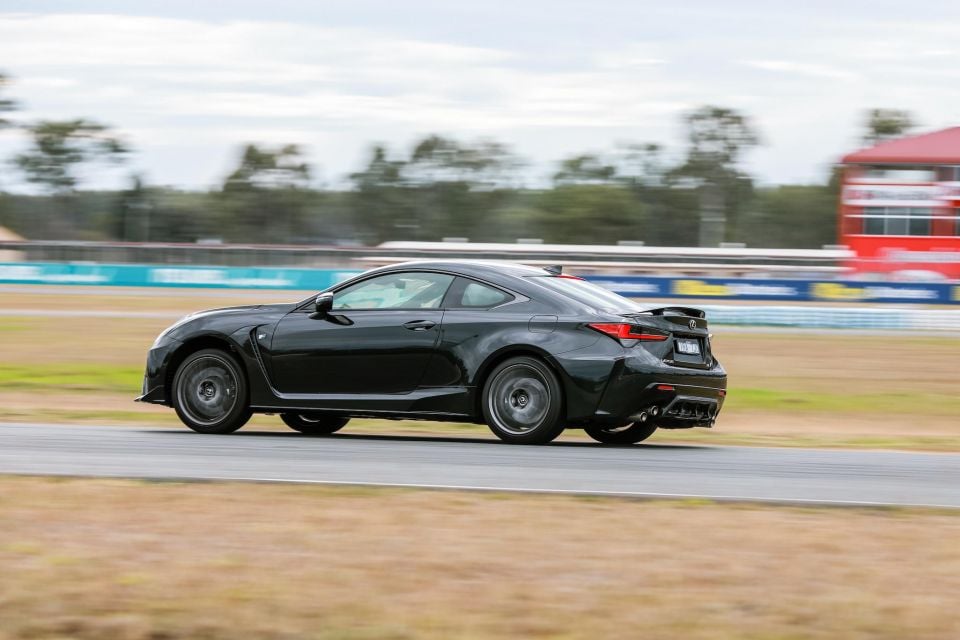

Performance Editor
New from
$66,324
excl. on-roads

Performance Editor
New from
$66,324
excl. on-roads


Performance Editor
New from
$66,324
excl. on-roads

Performance Editor
New from
$66,324
excl. on-roads
Quickly see how this car stacks up against its competition. Select any benchmark to see more details.
Where expert car reviews meet expert car buying – CarExpert gives you trusted advice, personalised service and real savings on your next new car.
The Lexus RC F has been around for a few years now, and remains a solid choice for buyers looking for a more traditional performance car that emphasises sound and emotion over outright performance.
Priced from $134,129 before on-road costs – or $165,690 for the Track Edition – the RC F has a lot of competition from the Germans which tend to have an advantage at the race track. Then again, their lap times will tell.
Before we get our hands on the RC F Track Edition, Chris Atkinson put the regular version through its paces at Queensland Raceway’s Sprint Circuit.

In what seems like a rarity in my first few track reviews, we have a performance car with a naturally-aspirated engine. Lexus is definitely following its own path with the RC F, and is willing to compromise where others aren’t.
Although this may not be a perfect track car it does a lot of things well, and achieves its performance without sacrificing comfort or on-road performance.
The Lexus R CF, at least this non-Track Edition, is more engineered for the road than the track – although you can still feel its weight on the road, and it could certainly do with more torque.
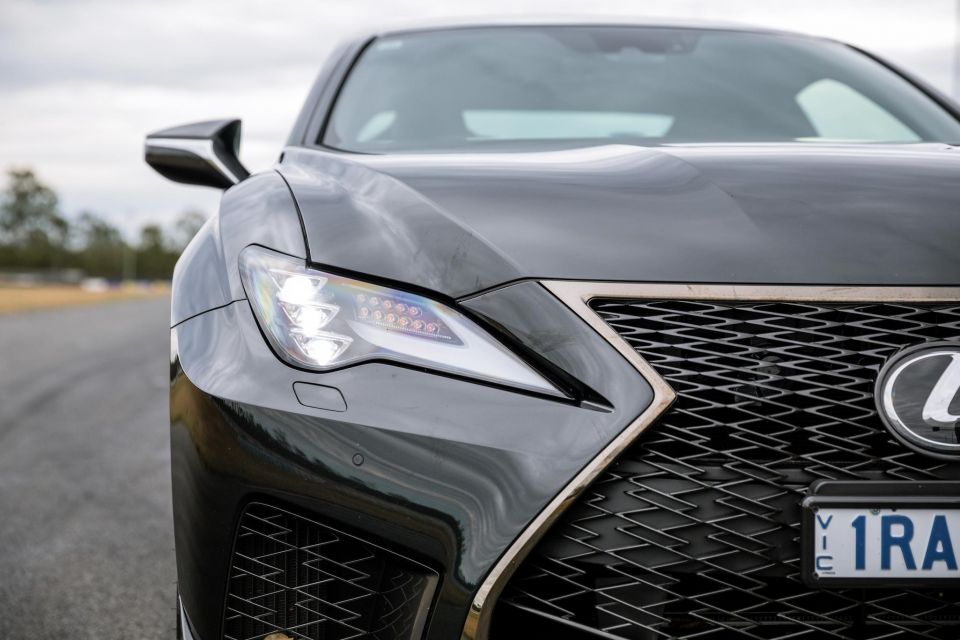
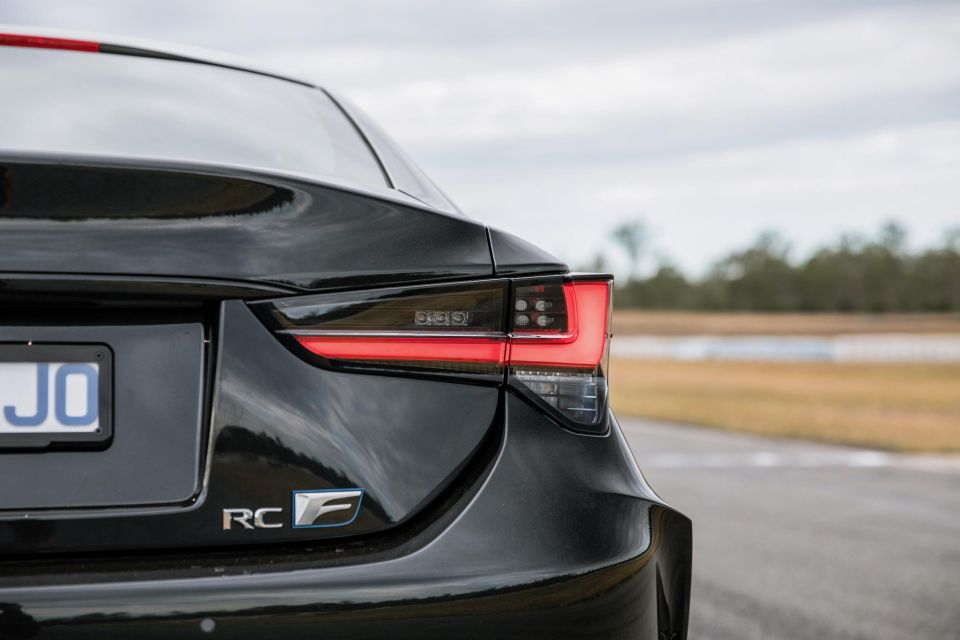
The V8 is enjoyable to drive once you’re higher up in the rev range and the compliance of the car’s suspension very much gives it the makings of a daily driver.
It could do with a little more theatre and noise, as per the LC500 with which it shares its engine, but that can easily be fixed with an aftermarket exhaust.
The naturally-aspirated 5.0-litre V8 engine doesn’t dominate like some of its turbocharged opposition, but it’s still enjoyable and responsive on the track.
The power numbers are decent, with 351kW and 530Nm, but it just lacks the torque of some of its peers. The fact the kerb weight of the RC F is 1845kg really plays a large role in the feeling you get from this engine.
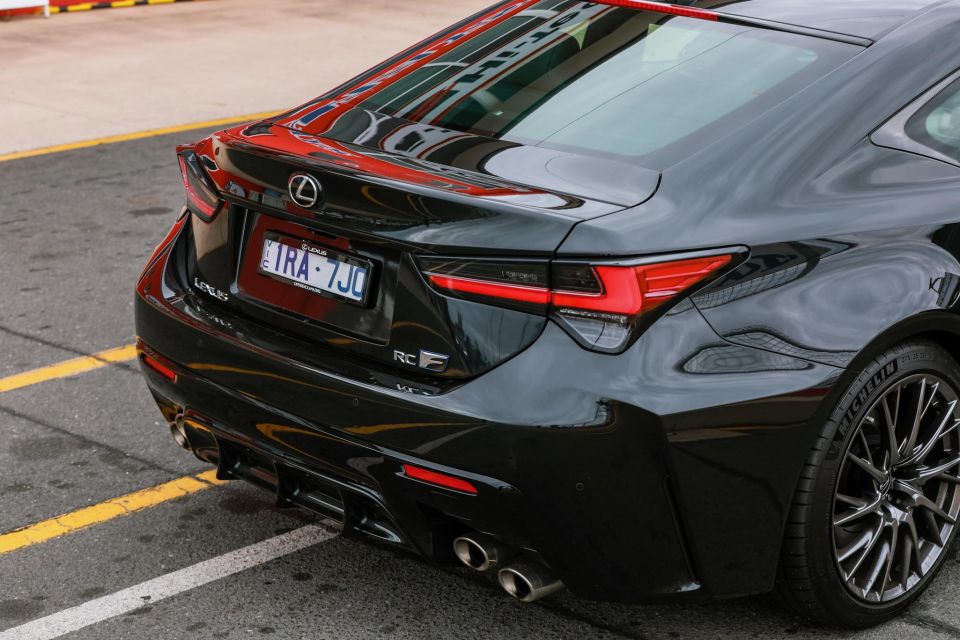
If you put this car on a weight loss program the engine would come alive, and performance would go through the roof.
Once you’re at speed and pushing through a flowing section the engine isn’t as much of an issue, but when you’re trying to build speed and have some punch on short straights you really do lose out to the turbocharged machines.
The difference is peak torque here comes on at 4800rpm where turbocharged cars like the M550i we recently tested can have that available from 1800rpm. The higher power and torque band in the RC F is not a problem if you are carrying momentum, and the engine works well with the eight-speed transmission.
My initial feeling of the brake pedal was excellent. I really liked how connected it felt, and the car followed what I was asking. Unfortunately, as soon as I started the flying lap that feeling went away, along with the braking performance.
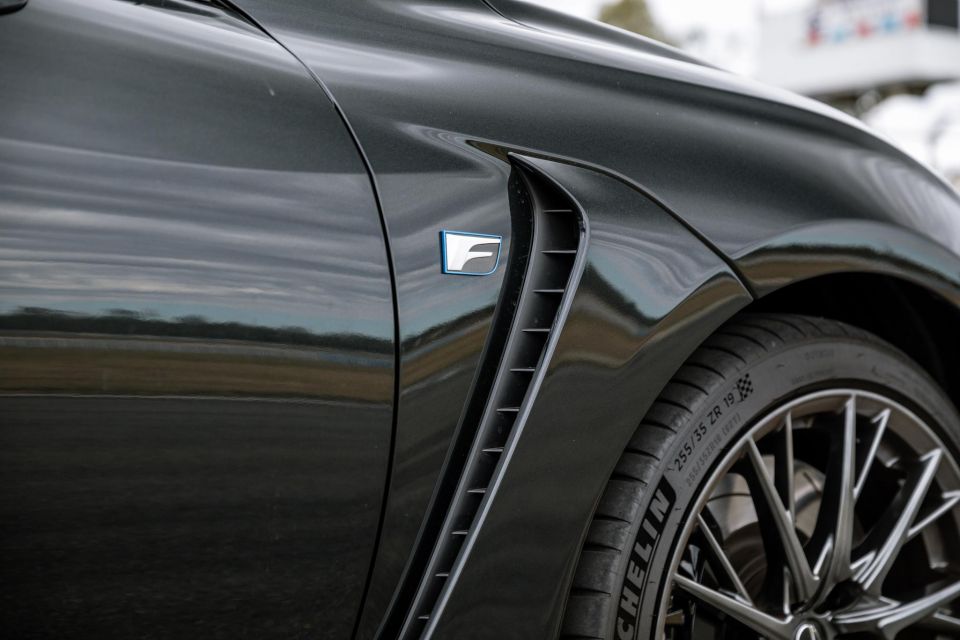
The pedal became longer and started becoming reliant on the ABS, which makes it difficult to properly enter the corner. For general road use up to a decent speed I think the brakes are really nice and work well, but for me they are not designed for hard track work.
Actual chassis balance was really good. I could drive the car hard in on the front end without having too much understeer and then balance it on the throttle from mid-corner to exit. This was especially good in the faster corners, where the engine was in a really good window
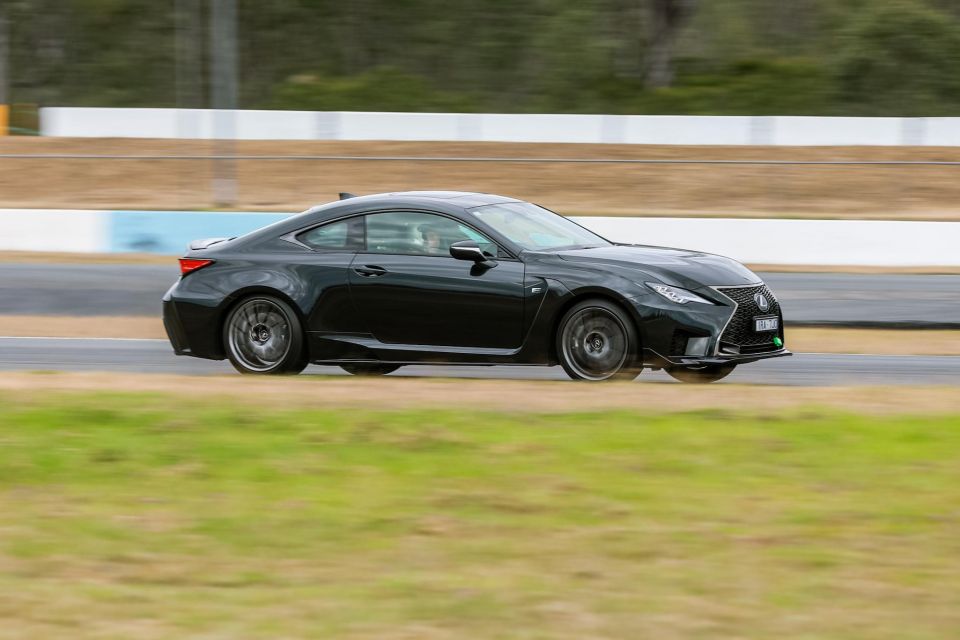
Traction out of corners was decent, although I would have liked a little more feedback at the limit. This seemed to be a trend with this RC F, everything was really close but as a driver I just wanted the car to give me something more in return.
It also lacks a bit of rotation when fully loaded in the middle of slower corners, but if you don’t mind countering this with a quick stab of the throttle you can get yourself pointing in the right direction very easily. This might not be the best way to achieve a good lap time, but it sure is fun
I found the rear differential, which is a Torsen LSD, to be a bit inconsistent. As I mentioned, I didn’t have the best feedback from the rear when it was at the limit of grip and a few times overstepped the mark.
Sometimes I had too much slip from the inside rear wheel and other times it was fine, but I just didn’t know when that was going to happen. I can’t point all the blame at the differential, it’s more that as a driver I wasn’t aware of the level of grip. A differential that would catch the slip a bit faster would have masked this feeling.
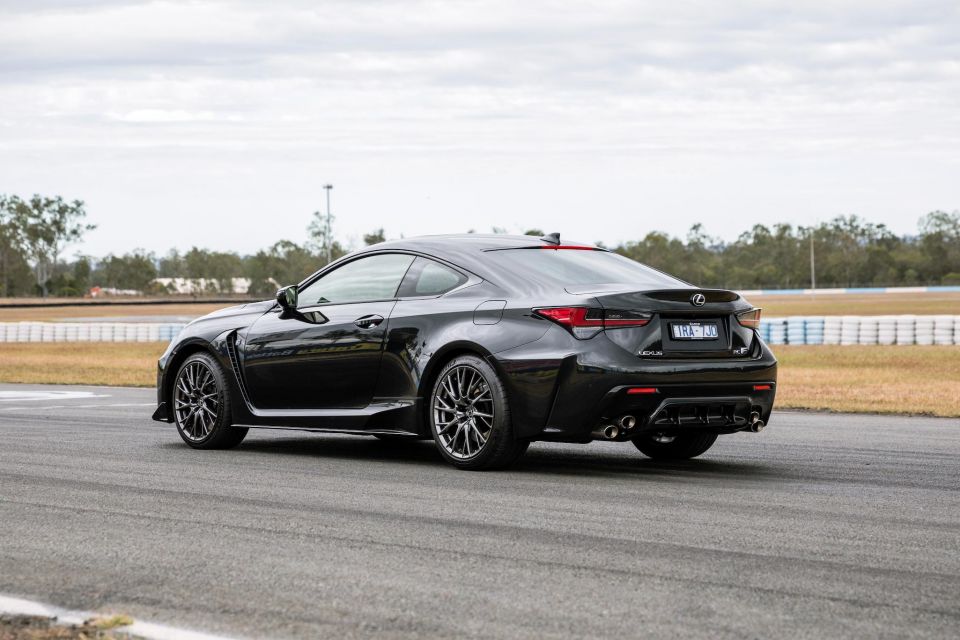
For me I can deal with something if it is consistent even if it’s not perfect, but it’s hard to push the limit with something you don’t trust 100 per cent.
As for the gearshift of the eight-speed transmission? I found it to be excellent. It is both quick and smooth, which is exactly what you want to maximise acceleration and drivability. Downshifts where sharp as well, and felt controlled with good rev matching.
Even though the general feeling is of a soft and comfortable ride there’s still support in the dampers, which was evident from the first time I jumped on the brakes. So many people think race cars have to be super stiff to do a good time, where in fact it;s more about controlling the movement at the right time and in the right way.
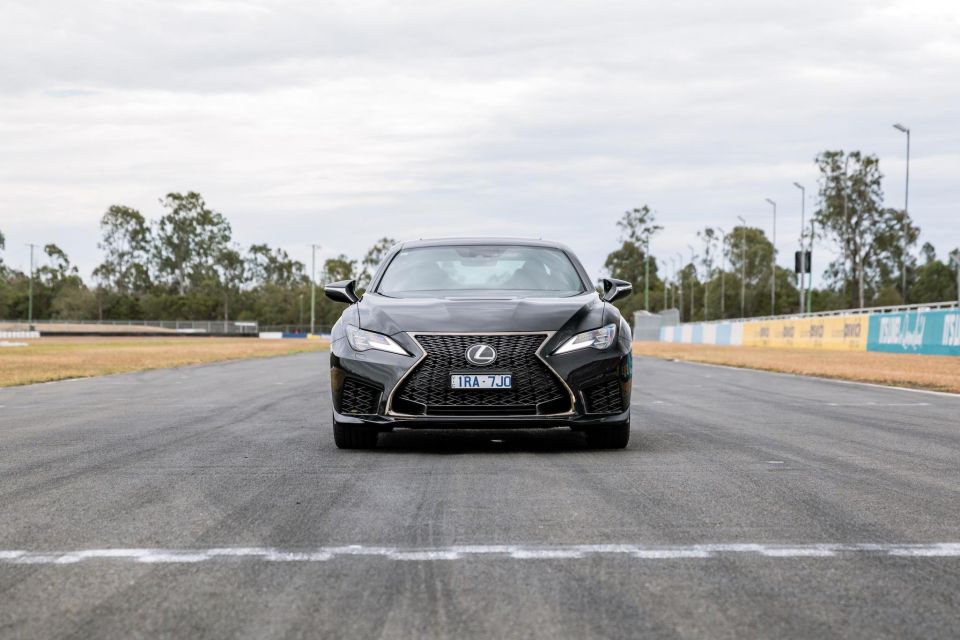
You can have soft damping but then at some point you need to slow down the movement, so it doesn’t shock the tyre too much. This is very similar to how you, as a driver, should drive a car fast as well.
I think Lexus has done good job in this area of the car. It handled the kerbs and bumps really well, which translates perfectly into road use.
The steering is a bit light and lacking the subtle feedback from the that I would have liked. I would also prefer a more reactive steering feeling.

The suspension has a part to play because it is reasonably soft, and it felt like it took time for steering inputs to be translated to the road.
The Michelin Pilot Sport 4S tyres are a good match to this car and offer decent track performance and stability without too much compromise on the road. They still dropped away on the second lap of each outing, which is no real surprise.
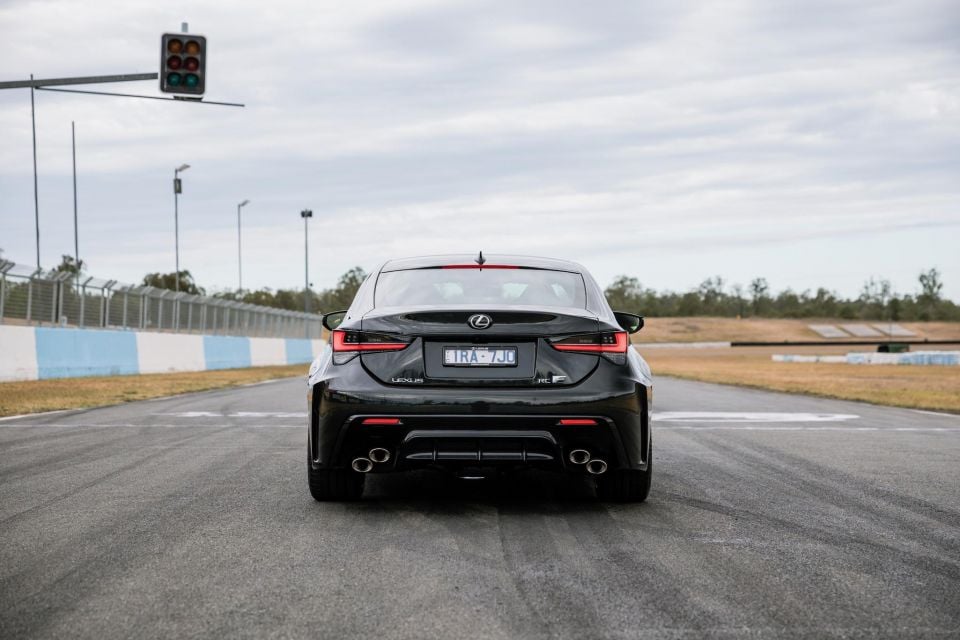
I ran my best laps with traction control off and in Sports Plus mode. Being more a fast road car rather than a track car, the traction control was restrictive and to get the most out of the car time wise, I couldn’t be held back on corner exit and really had to have the engine is the right window.
If the traction control kicked in, it hurt massively all the way down the straight.
The seating position is good, but I would have liked to be able to get slightly lower and more angled back relative to the dash. This is really a personal preference and by no means is bad.
Support from the seat was also pretty decent and comfortable at the same time. Like a lot of things in this Lexus, comfort hasn’t been entirely overlooked in a search for performance.

I feel like there are a lot of people, myself included, who would find it be pretty surprising if the Lexus RC F cracked the minute mark at our CarExpert test track.
It’s not the lightest car around and it still has a lot of its refined luxury features – so when it did a 59.33 lap, I was suitably impressed.
This is not a car that you are going to regularly take to the track, but you can definitely enjoy it for the occasional flying lap mixed with plenty of on-road entertainment.
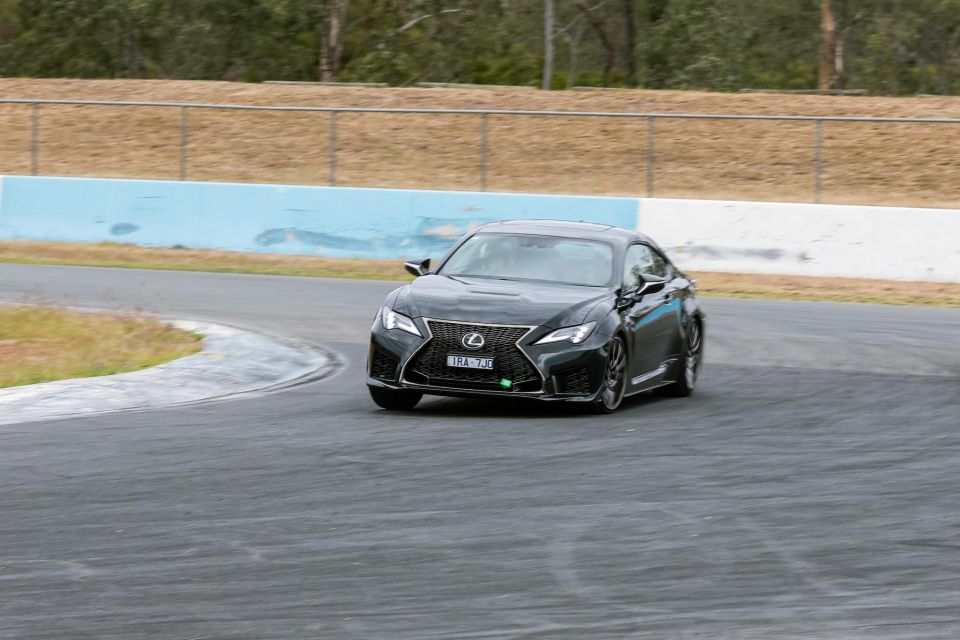
Where expert car reviews meet expert car buying – CarExpert gives you trusted advice, personalised service and real savings on your next new car.


Matt Campbell
5 Days Ago


James Wong
4 Days Ago


Max Davies
3 Days Ago


Josh Nevett
2 Days Ago


Josh Nevett
1 Day Ago


William Stopford
18 Hours Ago